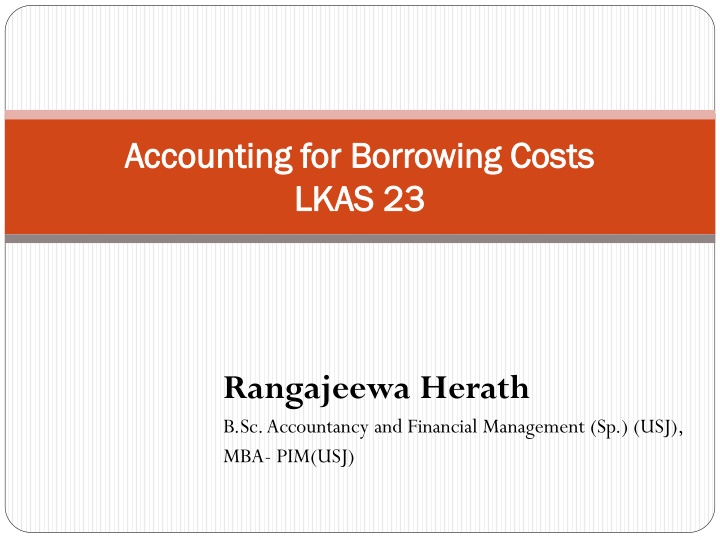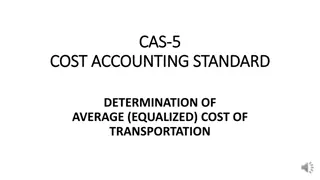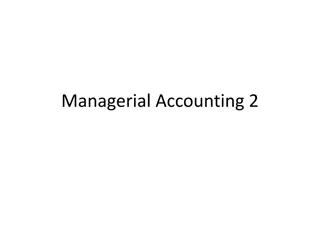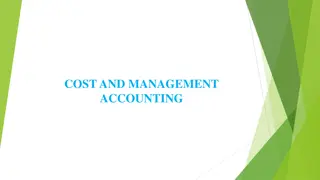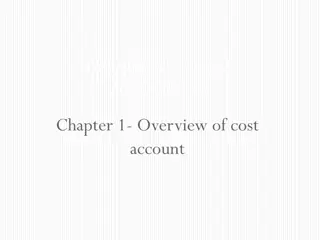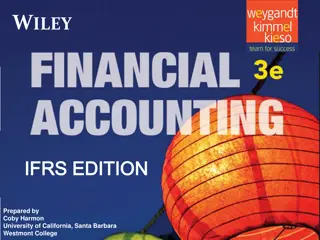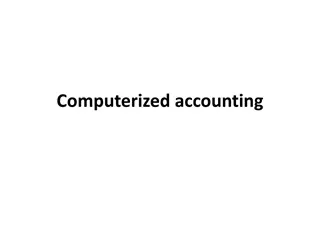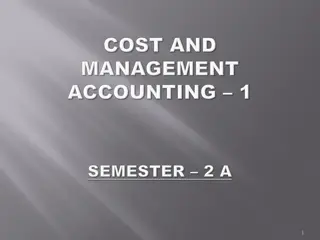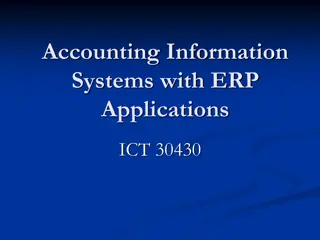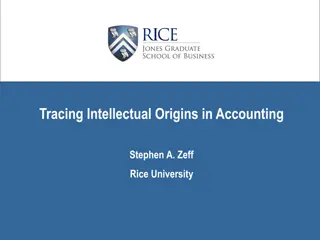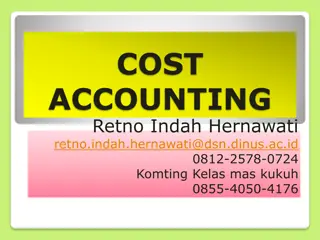Accounting for Borrowing Costs in Financial Management
Borrowing costs in financial management refer to interest and other expenses incurred when borrowing funds. These costs are crucial to account for correctly to ensure accurate financial reporting. Borrowing costs directly attributable to acquiring, constructing, or producing a qualifying asset are capitalized, while other borrowing costs are expensed. Qualifying assets include assets that take a substantial time to be ready for use, such as inventories, manufacturing plants, and intangible assets. The capitalization of borrowing costs involves determining the eligible amount based on actual borrowing costs incurred less any investment income earned. An example scenario illustrates how borrowing costs are determined and the carrying amount of an asset is calculated.
Download Presentation

Please find below an Image/Link to download the presentation.
The content on the website is provided AS IS for your information and personal use only. It may not be sold, licensed, or shared on other websites without obtaining consent from the author.If you encounter any issues during the download, it is possible that the publisher has removed the file from their server.
You are allowed to download the files provided on this website for personal or commercial use, subject to the condition that they are used lawfully. All files are the property of their respective owners.
The content on the website is provided AS IS for your information and personal use only. It may not be sold, licensed, or shared on other websites without obtaining consent from the author.
E N D
Presentation Transcript
Accounting for Borrowing Costs Accounting for Borrowing Costs LKAS 23 LKAS 23 Rangajeewa Herath B.Sc. Accountancy and Financial Management (Sp.) (USJ), MBA- PIM(USJ)
Borrowing costs Borrowing costs Borrowing costs are interest and other costs that an entity incurs in connection with borrowing of funds. - e.g: - Interest expense on financial instrument - Finance charges of a lease Rangajeewa Herath 2 2
Recognition Recognition An entity shall capitalized the borrowing costs that are directly attributable to the acquisition, construction or production of an qualifying asset as a cost of such asset. An entity shall recognized other borrowing costs as an expense in the period in which it incurs them. Rangajeewa Herath 3 3
Qualifying Asset Qualifying Asset Qualifying asset is an asset which necessarily takes a substantial period of time to get ready for its intended use or sale. Depending on the circumstances any of the following may be a qualifying asset. Inventories Manufacturing plant Power generation facilities Intangible assets Investment properties Rangajeewa Herath 4 4
Capitalization of borrowing cost Capitalization of borrowing cost - To the extent that an entity s borrows fund specifically for the purpose of obtaining a qualifying asset, the entity shall determine the amount of borrowing costs eligible for capitalization as the actual borrowing cost incurred on that borrowing during the period less any investment income on temporary investment of those borrowings. Rangajeewa Herath 5 5
Exercise 1 Kandy PLC started a construction of a building on 01.04.2015. For this purpose, on 01.04.2015, they obtained a bank loan amounting to Rs. 8 million. The construction was in the progress as at 31.03.2016 and Rs.6 million had been incurred for the building by that date. The interest cost of the loan for the year ending 31.03.2016 was Rs. 780,000. By temporary investing these borrowing the company has received interest income of Rs.190,000 during the year ending 31.03.2016. Identify the borrowing costs to be capitalized for the year ending 31.03.2016. Calculate the carrying amount of the building as at 31.03.2016 Rangajeewa Herath 6 6
Capitalization of borrowing cost Capitalization of borrowing cost To the extent that entity borrows funds generally and uses them for the purpose of obtaining a qualifying asset, the entity shall determine the amount of borrowing costs eligible for capitalization by applying the capitalization rate to the expenditure on such asset. The capitalization rate shall be the weighted average of the borrowing costs applicable to borrowings of the entity that are outstanding during the period, other than borrowing made specifically for the purpose of obtaining qualifying assets. Rangajeewa Herath 7 7
Commencement of capitalization Commencement of capitalization When the entity first meets all of the following conditions: It incurs expenditure for assets It incurs the borrowing cost It undertakes activities that are necessary to prepare the asset for its intended use or sale Rangajeewa Herath 8 8
